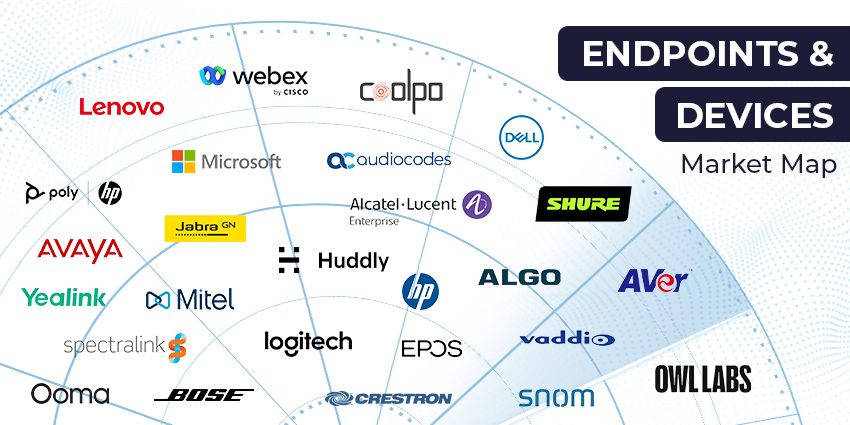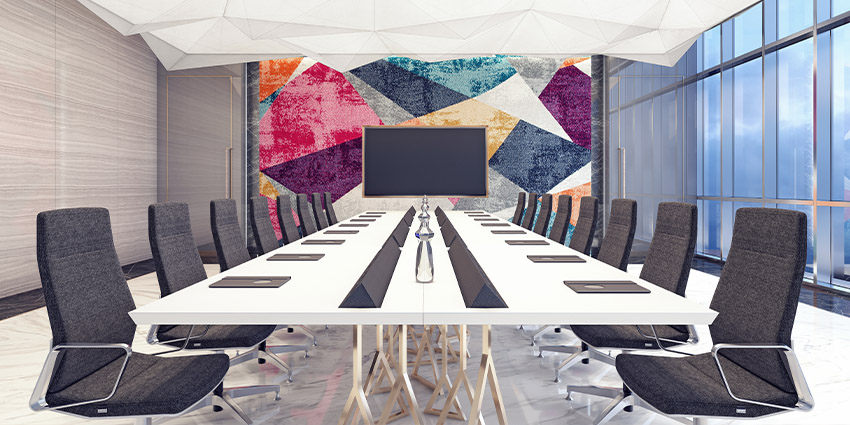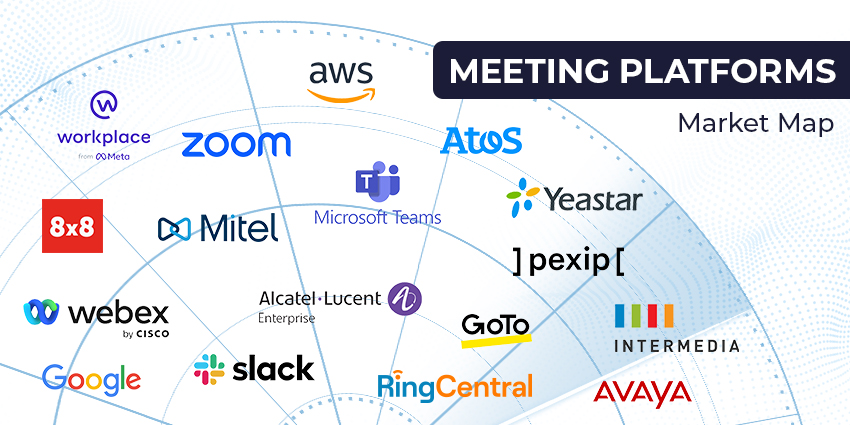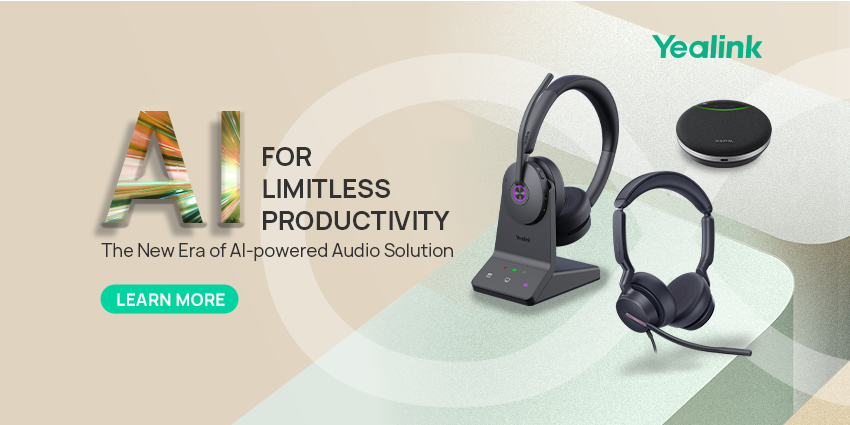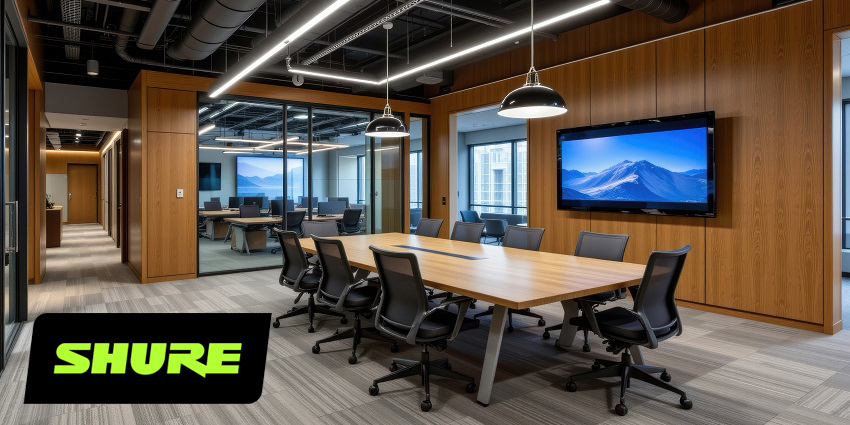Demand for hybrid work continues to grow as companies strive to offer employees flexibility while simultaneously encouraging a part-time return to the office. Nearly half of CEOs agree that the future of work is hybrid, but ideas of what this hybrid landscape will include are constantly evolving.
In recent years, countless new hybrid meeting room trends have emerged. AI, immersive technologies, and advanced AV solutions are transforming office design.
Business leaders can ensure they’re building an environment that engages, supports, and empowers their workforce by staying up to date with these trends.
Here are the trends you need to watch this year.
1. More Hybrid Meeting Room Deployment Options
Some studies show that as many as five generations of employees work together in the same company. Each has its own preferences and requirements for technology, meeting room equipment, and experiences.
At the same time, numerous types of workers, from hybrid and remote workers to mobile employees and in-office staff, need to be able to participate in meeting environments. Meeting rooms need to be inherently flexible to accommodate this new landscape.
Fortunately, hybrid meeting room deployment options adapt to suit the new landscape. Companies are rapidly embracing bring your own meeting, and bring your own device strategies, allowing employees to use their preferred tools and turn any space into a meeting room.
We’re also seeing the rise of companies offering all-in-one room kits, hardware-on-demand services, and hiring options. This flexibility in deployment options will allow companies to remain agile and adapt their office design to address evolving needs.
2. Advanced Workplace Management Tools
Managing the hybrid workplace can be difficult, particularly when the number of employees in the office is constantly changing. Fortunately, vendors in the technology industry are producing ever-more innovative tools to make coordinating the workplace more effective.
Microsoft Places, for instance, is a new application that empowers companies with location planning tools, space booking, and presence capabilities. It even comes with access to Copilot, which can help team members choose when to attend an office based on who will be present. Plus, the same AI tools can give businesses insights into how to allocate and use meeting room resources.
Advanced workplace management tools will help business leaders reduce operational costs by assisting them in designing workplaces that adapt to their teams. They’ll also provide businesses with the insights to create more inclusive, engaging spaces.
3. The Rise of Immersive Collaboration
The metaverse might not be a common part of the office yet, but immersive collaboration is becoming increasingly popular. In the last couple of years, we’ve seen the launch of innovative software solutions, like Microsoft Teams Immersive Spaces, which empower teams to work together in virtual environments that adapt to their needs.
Even Google is working on projects like Project Starline to bring immersive video meetings into the workplace. Plus, extended reality innovators are paying more attention to the needs of the enterprise, producing products specifically tuned to the workplace.
We’re seeing a significant increase in the number of AR smart glasses available for all types of employees, as well as AR/VR headsets, mixed reality solutions like the Apple Vision Pro, and more. Some display vendors are working on video walls and similar solutions to help businesses create more immersive hybrid meeting rooms without XR.
4. Artificial Intelligence Enters the Meeting
AI has been influencing the design of the hybrid meeting room for a while now. Companies offer a range of intelligent solutions to companies, from AI cameras and speakers that can automatically track people during conversations and enhance meeting quality. There are even a growing number of AI assistants in meeting room software, like Microsoft Copilot.
These AI-powered assistants can assist businesses with a range of tasks. Copilot in Places can suggest the best time for employees to visit an office based on various factors. Copilot in Teams can create meeting agendas, summarize conversations, and assign action items to staff.
Some AI leaders are even looking for ways to embed AI deeper into meeting environments, with things like Microsoft Team Copilot, which gives every company an AI employee who can participate in conversations in real time. With the right AI tools, companies can improve inclusivity in meetings, boost productivity and focus, and enhance decision-making.
5. New Hardware in the Hybrid Meeting Room
The technology used in the hybrid meeting room is constantly evolving. We’ve already mentioned immersive screens that can improve interactions. Some screens enable touch-based interactions, while others can use AI cameras to track gestures and movements.
Consolidation is becoming increasingly common in hybrid meeting room technology, too. Alongside video bars that combine microphones, cameras, and speakers, we’re seeing an increased number of displays with built-in meeting room technologies.
New forms of hardware, like specialist devices intended to eliminate background noise and disruptions in focus spaces, are emerging alongside unique accessories. Companies use IoT and sensors to track meeting room attendance and automatically configure spaces for individual user needs. Whiteboards for creative collaboration are becoming more intuitive.
Plus, meeting room hardware is becoming more agnostic, paving the way for effective BYOM and BYOD capabilities in the agile workplace.
6. Comfort, Wellbeing and Personalization
Companies struggling to implement effective return-to-office mandates have recognized a need to focus on user experiences in the meeting room. Hybrid meeting rooms can’t just give teams the technology they need to collaborate; they need to adapt to their specific requirements.
There’s a growing focus on building flexible, immersive meeting spaces. These spaces allow employees to leverage their preferred hardware and software (from smartphones to meeting room apps) without the need for complex configuration and setup. Plus, meeting room analytics software gives companies access to more valuable metrics about employee engagement and satisfaction.
AI tools used to track sentiment and productivity in the meeting space can help businesses decide how to design meeting rooms effectively for more inclusive experiences. IoT solutions can also track environmental conditions like temperature and humidity and even enable fans and other technologies in real time to improve comfort.
7. Sustainable Hybrid Meeting Rooms
In recent years, sustainability has emerged as a critical concern for all companies. Studies show that consumers are becoming increasingly concerned about the measures companies take to protect the environment. Plus, a focus on sustainability can help businesses to reduce operational costs.
Hybrid meeting room hardware companies are adapting to this trend by offering more eco-conscious products, which consume minimal electricity, and leverage recycled materials. Software vendors offer access to analytical tools that allow companies to track their energy usage. There are even automation solutions that allow users to switch off devices remotely.
Plus, the rise of hardware as a service and meeting room hiring options has led to new ways for companies to reduce electronic waste. These trends will continue as consumers, stakeholders, and governments prioritize the environment.
Adapting to Hybrid Meeting Room Trends
The world of work is constantly evolving, and the hybrid meeting room is transforming alongside it. Today’s companies have access to countless solutions, from AI and IoT systems to extended reality, that can help them boost inclusion, productivity, and creativity in the workplace.
Adapting to the latest hybrid meeting room trends can enhance employee engagement and performance.



